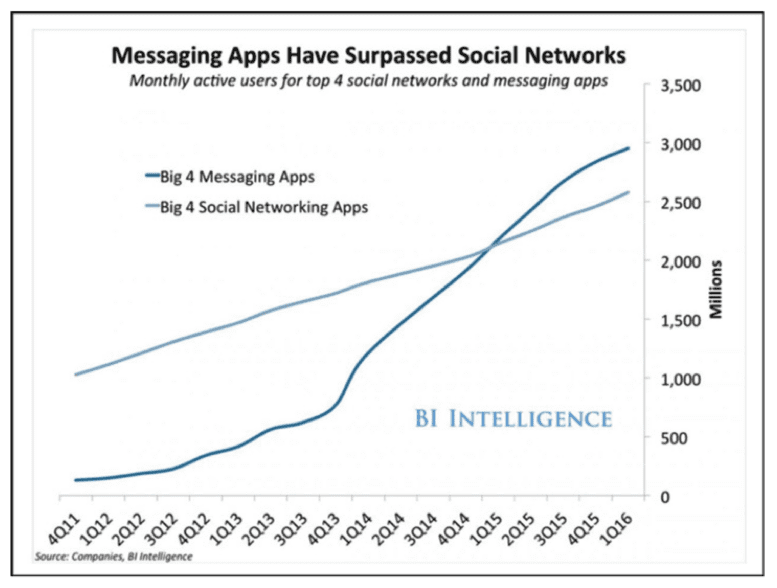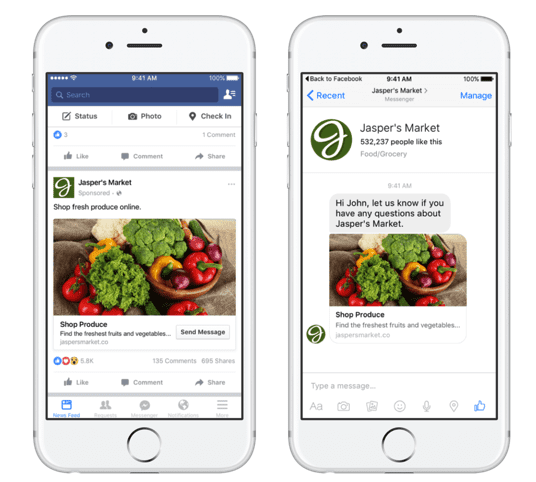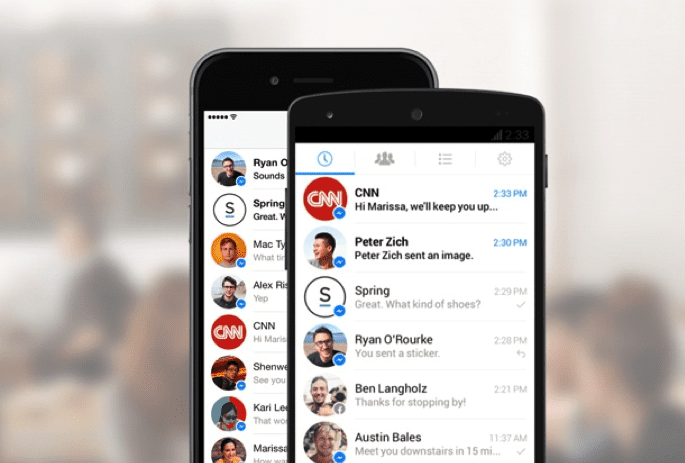Messenger apps have a bigger audience than social networks. Here is how to reach them.
Messenger apps are big. The top four messaging apps - Facebook Messenger, WhatsApp, WeChat, and Viber - now claim nearly three billion monthly active users combined, which is more than the combined active users on the world's four largest social networks (source: BI.com).

Brands understand that one of the key ways of being increasingly relevant to customers is to be where they are; more specifically, communicate where their customers communicate. This of course was a key reason why many early-mover brands began to shift budgets away from TV and towards social networks. Fast forward to 2017, and being ‘where your customers are’ means focusing on one-to-one chat apps like Facebook Messenger and China’s WeChat. Indeed, in terms of the latter, users can not only use the app to chat with friends but also conduct mobile payments, play games, stream music, and partake in a variety of online-to-offline services like ordering cabs and takeaways. To offer such features, WeChat had to open its platform to third-parties (i.e. advertisers), which is where Facebook currently is with the development of Messenger; for it to become a more sophisticated product, advertisers have a huge role to play.
Moreover, as demonstrated by the success of WeChat, users actually want to engage with brands - when it suits them. Engaging with a brand via Facebook Messenger, allows consumers to ask those pre-purchase questions that will likely be valuable in ensuring an informed buying decision. Whereas the user experience was previously a relatively one-way experience, now it has become enriched with real-time interaction.
But what does advertising on Facebook Messenger actually look like? Well, there are two distinct ways for businesses to connect with consumers via this ad format; Facebook Messenger Destination Ads, and Sponsored Ads.
Messenger destination ads
Like many other Facebook ad formats, Messenger Destination Ads appear in the news feed; and have a call-to-action; the distinction is that they don’t lead to a page like or a website visit, instead, they open a Facebook Messenger message. The ad unit has two elements, the ‘regular’ Facebook ad, and the ‘welcome’ message in Messenger:

The ad creation element is straightforward, as it can be based on an existing variant such as image, video, carousel etc. You are charged when a user clicks on the ‘send message’ call-to-action. As with other ad formats, Facebook Messenger Ads can be used to target any user, regardless of whether they presently follow your brand or not - which makes this a particularly interesting prospecting tool.
For example, it’s late October and you’ve just opened a brand new coffee shop. Looking to interact with a local audience, you create an ad which ‘asks’ your target audience to message you via Messenger and offer suggestions on which unusual recipes they’d like to see to celebrate Halloween. A prospect messages you with a suggestion, you engage in a conversation, and then proceed to offer a discount code if they visit your shop in the next couple of hours.
Sponsored Messsage ads
Unlike Messenger Destination Ads, Sponsored Message Ads only appear inside Facebook Messenger itself. The ads will initially appear similar to message interactions from friends, before expanding to a ‘full-size’ message, as the below example for CNN shows:

Moreover, you can utilise images and links, in addition to text in order to maximise engagement. But what about message spam you say? Well with this type of ad can only target people who have previously messaged your page. You’re charged when someone opens a message, as with other forms of message advertising such as LinkedIn InMail.
Looking at example cases, you may want to consider this format as a marketing follow-up to someone who has previously interacted with your brand, in regards to a customer service query. In addition, you could also seek to retarget those whom have previously engaged with your website, but perhaps didn’t make a purchase. In this scenario, it may be that high delivery costs or lack of product clarity were the initial roadblock, in which case you now have the perfect channel to alleviate those concerns. You could even look at up-selling or cross-selling further items or, why not give them a 15% coupon code off their next order. All of this can be done without the prospect having to pick up the phone or making the effort to visit a bricks-and-mortar store.
Putting it all together: Building your subscriber list
With Sponsored Message Ads you can only message people who’ve messaged you before. The key challenge for most advertisers would be to build up their ‘list’. One way of achieving this would be to use Messenger Destination Ads to drive prospects initially to Messenger, and then follow up with Sponsored Messages with more sales-led messaging.
You can also use outside channels like email to facilitate initial message conversations. For example if a user has subscribed to your email list, you could promote your Messenger functionality as a more ‘responsive’ way to engage with your business (think following up on order tracking status, arranging hair appointments etc.).
While this all sounds great, you’re probably thinking that all this messaging to and fro requires some serious manpower to manage. That may be the case, but with the continued maturation of automated ‘chatbot’ technology, we can now automate much of the communication process. For example, chatbot company FlowXO offers the flexibility of creating robust bot sequences for Messenger to deal with ‘initial’ interactions, which can then be replaced with a human presence once some form of commercial intent becomes apparent. This allows the advertiser to scale their top-of-the-funnel activity, whilst ensuring maximum control and relevancy once a user journey reaches a more advanced phase.
So to recap, you can do three things to ensure you are leveraging Facebook Messenger as an advertising platform.
- Integrate your other marketing activity, like email, with Facebook Messenger to organically build your ‘list’ and maximise reach within the Messenger app.
- Supplement your organic reach with paid activity, via Messenger Destination Ads. Use the relative uniqueness of this ad format to drive first-time interactions in a creative, ‘non-salesy’ way.
- Once users have engaged with you via Messenger, use Sponsored Messages to engage with your target audience. Be careful not to spam, and use automated bot software to scale mid-funnel presence. You’d want to ensure that your human conversations are being leveraged when commercial intent is indicated.
Communication apps were always going to be the next frontier for advertisers, and not just because of their exponential growth over the last couple of years. It is after all, how most of us communicate with friends, on either a one-to-one or group basis. Now as marketers, we can either adapt to this emerging medium, or be left behind.

Thanks to Harpal for sharing their advice and opinions in this post.Harpal Singh is a paid media evangelist at digital agency
Jellyfish and a dedicated paid media trainer at
Jellyfish Training..






 Thanks to Harpal for sharing their advice and opinions in this post.Harpal Singh is a paid media evangelist at digital agency
Thanks to Harpal for sharing their advice and opinions in this post.Harpal Singh is a paid media evangelist at digital agency 


